A sacred text banned from the Bible claims to reveal the identity of the person who killed Jesus, changing everything that we know about the death of the Lord.
The ancient line is written in the Acts of Pilate, more commonly known as the Gospel of Nicodemus, but despite professing the ‘truth’ about the Son of God, it has never been accepted into the Holy Book as we know it.
But before we get into it, let’s quickly run through the time and date of Jesus’ death.


The Crucifixion by Jean Francois Portaels (Getty Stock Images)
It has been universally believed that Jesus died on Good Friday, therefore he died on 3 April AD 33 at around 3pm.
Even NASA has looked into it. On its website explaining how far back in history solar eclipses have been recorded, the space agency stated its evidence.
“Christian texts mention that the Moon turned to blood after Jesus’s crucifixion – potentially referring to a lunar eclipse, during which the Moon takes on a reddish hue,” it read.
“Using this textual source, scholars narrowed down a possible date of crucifixion to Friday, April 3, 33 C.E. because a lunar eclipse occurred that day.”
So now we’re all singing from the same hymn sheet, let’s get into it.
Pierced by a spear on the cross
In the Bible, the book of John chapter 19 verse 34 (John 19:34), it references a Roman soldier having stabbed Jesus – who many scholars believe would have likely actually have been called Yeshu Nazarene.
The verse in question reads: “But one of the soldiers pierced His side with a spear, and immediately blood and water came out.”
But who was that soldier?


Sculpture of Jesus and Longinus, the Roman soldier who pierced Christ in his side with a lance, in the Cathedral of Leon, Spain (Getty stock)
The man known as Longinus
In the Gospel of Nicodemus, the scripture claims to know the identity of that solider. His Name? Longinus.
Deep in the book it notes that Longinus took a lance and pierced the side of Jesus, and just like in the Book of John, blood and water poured out of him.
While the Eastern Orthodox Church claim Longinus to be the person quoted in Matthew 27:54 saying “Truly this was the Son of God,” after an earthquake followed Jesus’ death.
Despite having never been named in the Bible, legend has it that he witnessed the supernatural events that took place and converted to Christianity.
However, there’s no physical or historical evidence that actually confirms Longinus to be a real person, although there are many stories that have been passed down which details how he was later killed due to his Christian beliefs – having preached the gospel.
That was at a time when Christianity was illegal – during the early centuries of the Roman Empire.


The Statue of Saint Longinus the Centurion Rome’s St Peter’s Basilica, Vatican City (Steve Christo/Corbis via Getty Images)
While there is no evidence to confirm his existence, other than scripture, a statue of Longinus can be found under the dome of Saint Peter’s Basilica, in the Vatican City.
Why the Gospel of Nicodemus was banned
There is a debate over who exactly wrote the scripture due to the date recorded.
It was never canonized by early Church leaders. It is thought that it is because it is a later work dating back to around the 4th or 5th century – so hundreds of years after the events took place.
Although many others believe it was the work of Nicodemus, who was mentioned in the Gospel of John as to having helped bury Jesus.
Featured Image Credit: Getty Images/Pleasureofart
Topics: Religion, Catholic Church, History
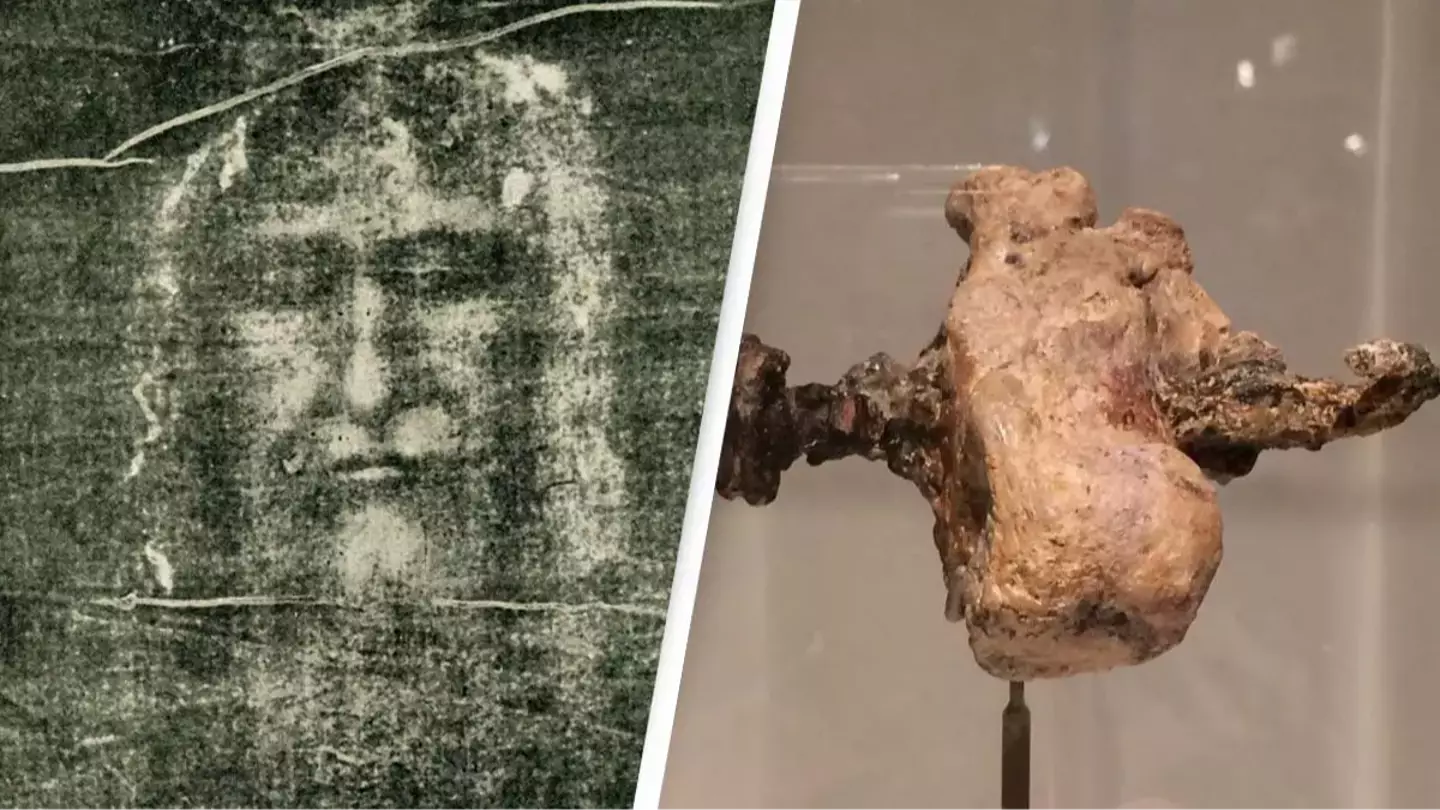

Even if you’re not a Christian, you may have pondered whether a man named Jesus Christ did actually live 2,000 years ago in Israel.
Whether he turned water into wine and rose from the dead is perhaps more up for debate for the atheists among us, but historians have seven pieces of evidence that suggest Jesus actually existed.
Let’s get straight into it.
1. Shroud of Turin
Some people believe that Jesus’ body was wrapped in the Shroud of Turin, an ancient holy relic, after his crucifixion.
But new evidence casts doubt over whether this was actually the case.
Brazilian graphics expert Cicero Moraes created a virtual simulation of the shroud to place over an image of a body to see whether impressions on the fabric were a match.
He argued that rather than the cloth used to shroud Jesus, it is actually a piece of Christian art.
Moraes said: “On one side are those who think it is an authentic shroud of Jesus Christ, on the other, those who think it is a forgery.
“But I am inclined towards another approach: that it is, in fact, a work of Christian art, which managed to convey its intended message very successfully.”
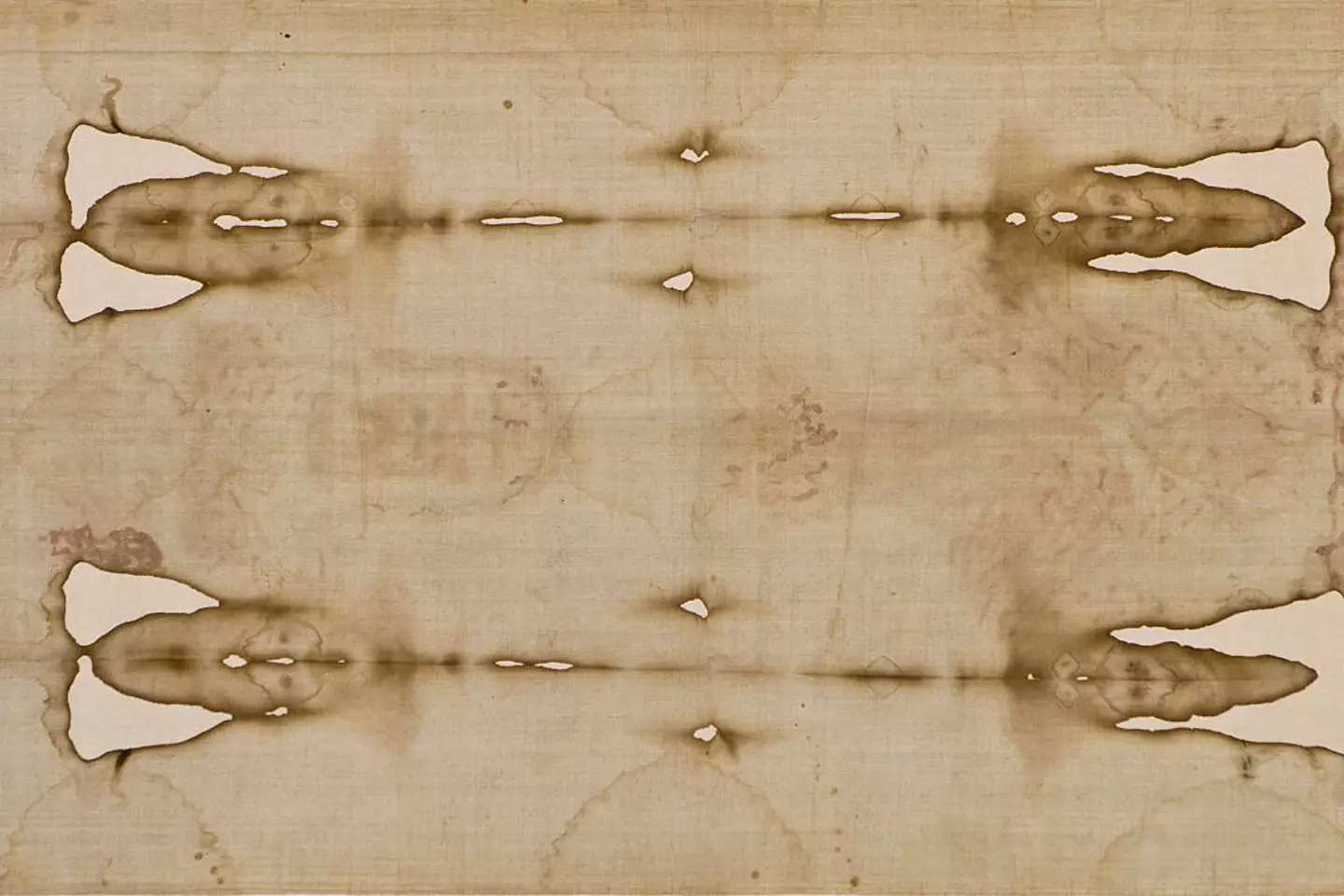

The Shroud of Turin is a linen cloth with the image of a man, it is considered an important relic by Christians who believe it to be the burial shroud of Jesus bearing his image after the crucifixion (Marco Destefanis/Pacific Press/LightRocket via Getty Images)
2. Literature
It is the obvious one, we have a good idea Jesus Christ actually existed because we’ve got hundreds of passages about him in the Bible and then all the other books.
You’ve got the non-Christian authors who actually opposed Christianity, but they speak about this man called Jesus.
Speaking to the MailOnline, Dr Lawrence Mykytiuk, a specialist in Hebrew studies from Purdue University, said: “We have many very good reasons to accept the real, historical existence of Jesus of Nazareth.
“For well over 1,000 years, no one claimed that Jesus did not exist.
“Every single non-Christian source from ancient times recognizes, implicitly or explicitly, that he was a real person who really existed.”
3. A heel from a crucified man
Some scholars believe that if Jesus did actually exist, he would not have been granted a proper burial if he was an enemy of the state, and they argue that he would have been tossed into a mass grave after crucifixion.
But back in 1986 a construction crew happened upon a number of tombs in northern Jerusalem, and one had the name Jehohanan marked on it – and he had a nail in his heel, indicating he was crucified.
This supports the details of Jesus’ crucifixion, and also suggests family members could retrieve the remains of crucified criminals, as depicted in the Bible.
It doesn’t exactly prove Jesus’ existence, but it vouches for the accounts of his death as written in the Gospel.
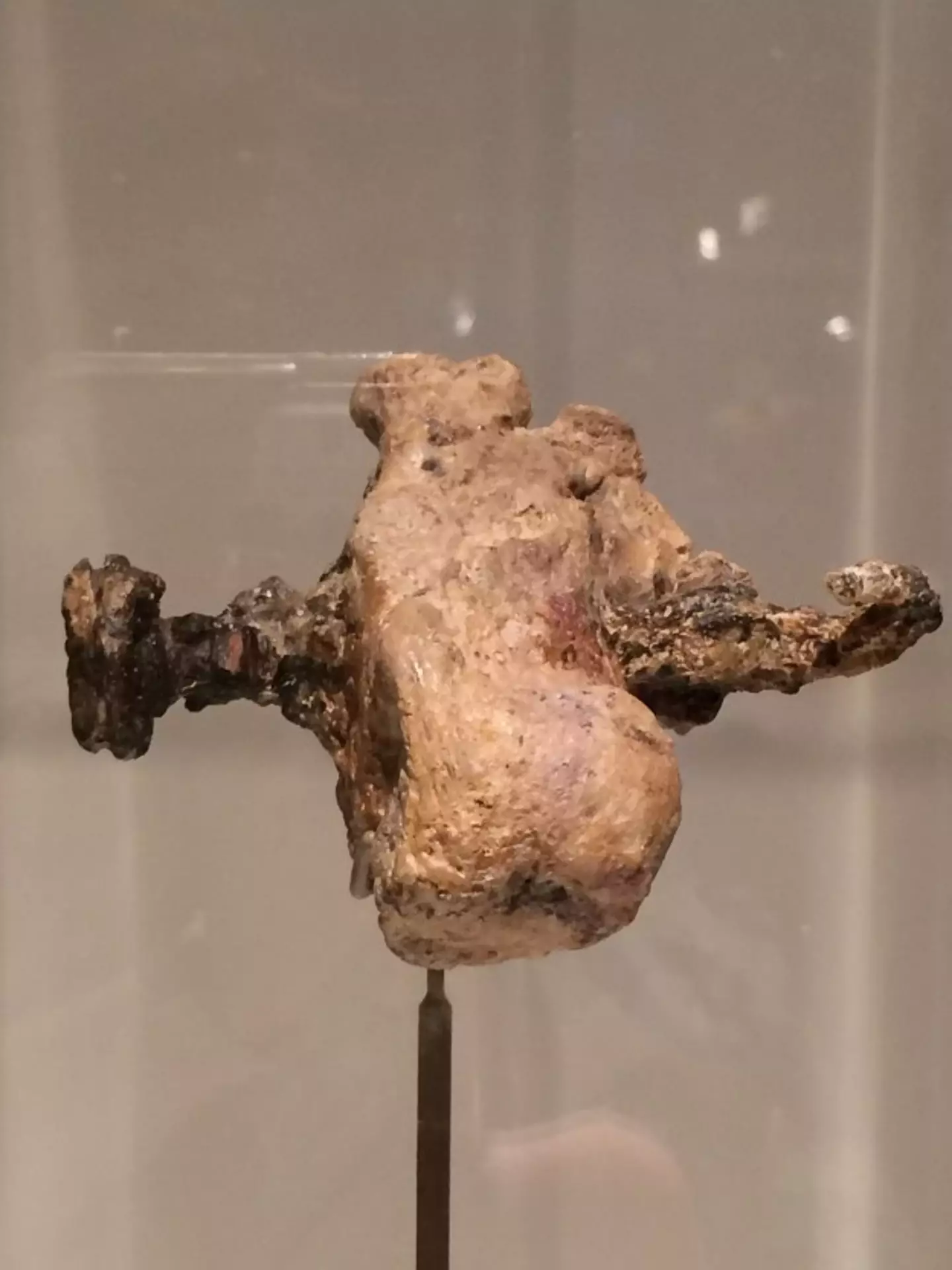

A heel of a man who was crucified proved that even people deemed to be enemies of the state were allowed to be buried properly following their death penalties (Israel Museum)
4. Jesus referred to as a ‘God’ in an inscription
On the floor of an Israeli prison an inscription reads ‘The god-loving Akeptous has offered the table to God Jesus Christ as a memorial’ – and it it dates all the way back to the year 230.
It tells us that as little as 200 years later he was seen as a divine figure, the 581-square-foot mosaic was labeled ‘the greatest discovery since the Dead Sea Scrolls’ by the CEO of the Museum of the Bible Carlos Campo.
5. The Church of the Apostles
Just seven years ago, in 2017, archaeologists discovered the remains of a Byzantine basilica, what would have been a large structure, in the El Araj region of Israel next to the River Jordan.
It is believed Peter, Andrew and Phillip, Jesus’ apostles, lived there.
Speaking in 2021 Professor Steven Notely told the Biblical Archaeology Society: “There are no other churches in the vicinity mentioned by Byzantine visitors to the Holy Land, and there is no reason to question that this is the [Church of the Apostles].”
6. Graffiti or ‘Alexamenos Graffito’
Yes, around 1,900 and 1,700 years ago someone graffitied a rather crude version of Jesus into a wall in a room near the Palatine Hill in Rome, Italy.
It was dubbed the Alexamenos Graffitto and it depicted a man with a donkey’s head nailed to a cross, while another man worshipped him with a message alongside it that read: “Alexamenos worships [his] god.”
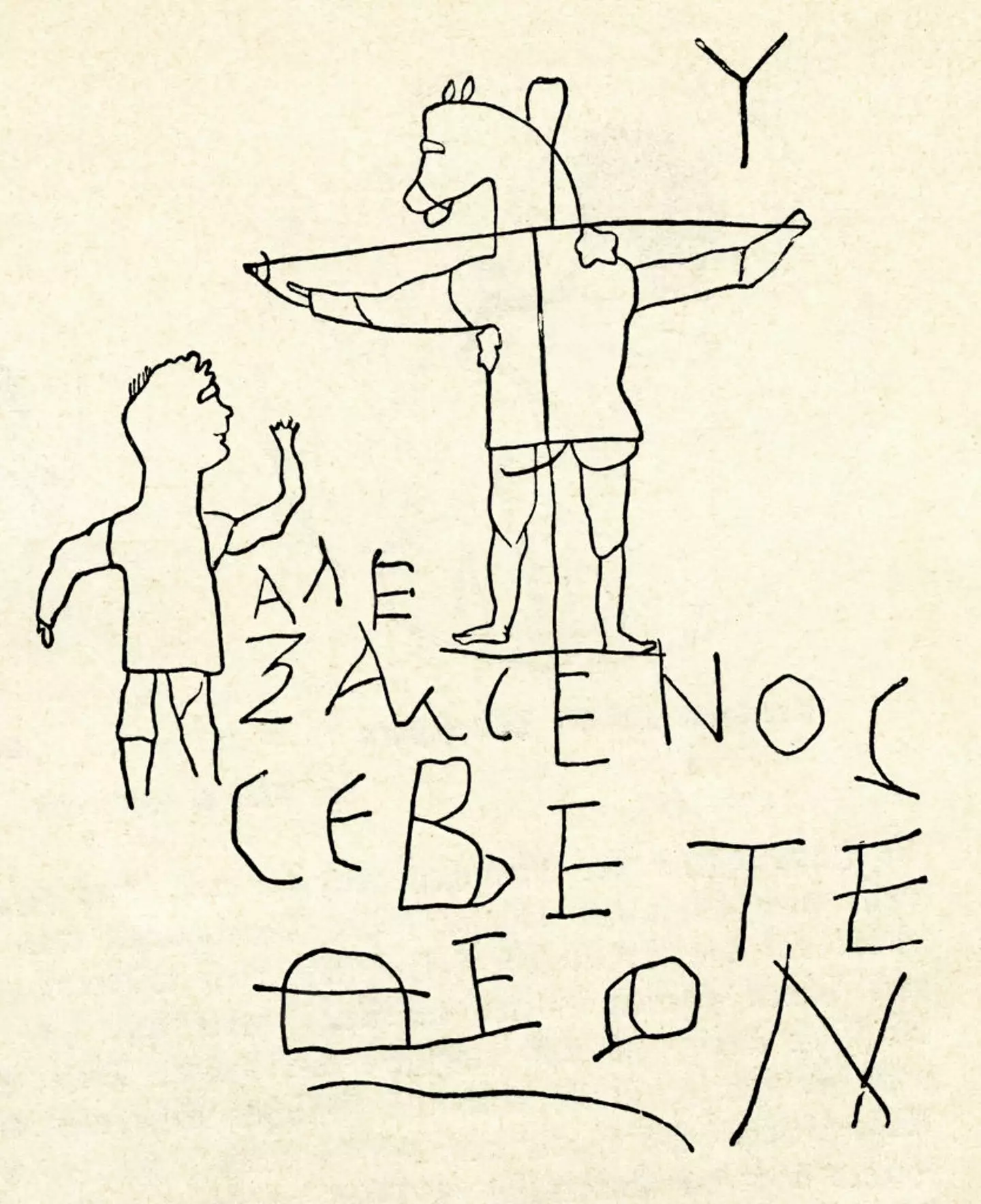

Alexamenos graffito – Roman anti-Christian graffiti discovered on a wall in Palatine Hill, Rome. Greek inscription reads ‘Alexamenos worships his God’ with an image of a man worshipping a crucified, donkey headed figure (Culture Club/Bridgeman via Getty Images)
7. Jesus’ brother James
The James Ossuary, a box of remains, included the inscription: “James, son of Joseph, brother of Jesus.”
Bible scholar at the Asbury Theological Seminary Dr Ben Witherington III told the MailOnline: “The likelihood of that particular combination of those three names not referring to the famous James the Just, and his father Joseph, and his brother Jesus are slim to none.
“If it were true that the crucifixion was the end of Jesus’ story, no one would be bragging about being related to him on an ossuary.”
Although the relic has been claimed to be a fake by the Israel Antiquities Authority who took Oded Golan, an Israeli businessman, to court over it.
But if it is real, then it would certainly indicate that Jesus lived.
Featured Image Credit: The Print Collector/Getty Images / Israel Museum
Topics: Religion, History, Catholic Church
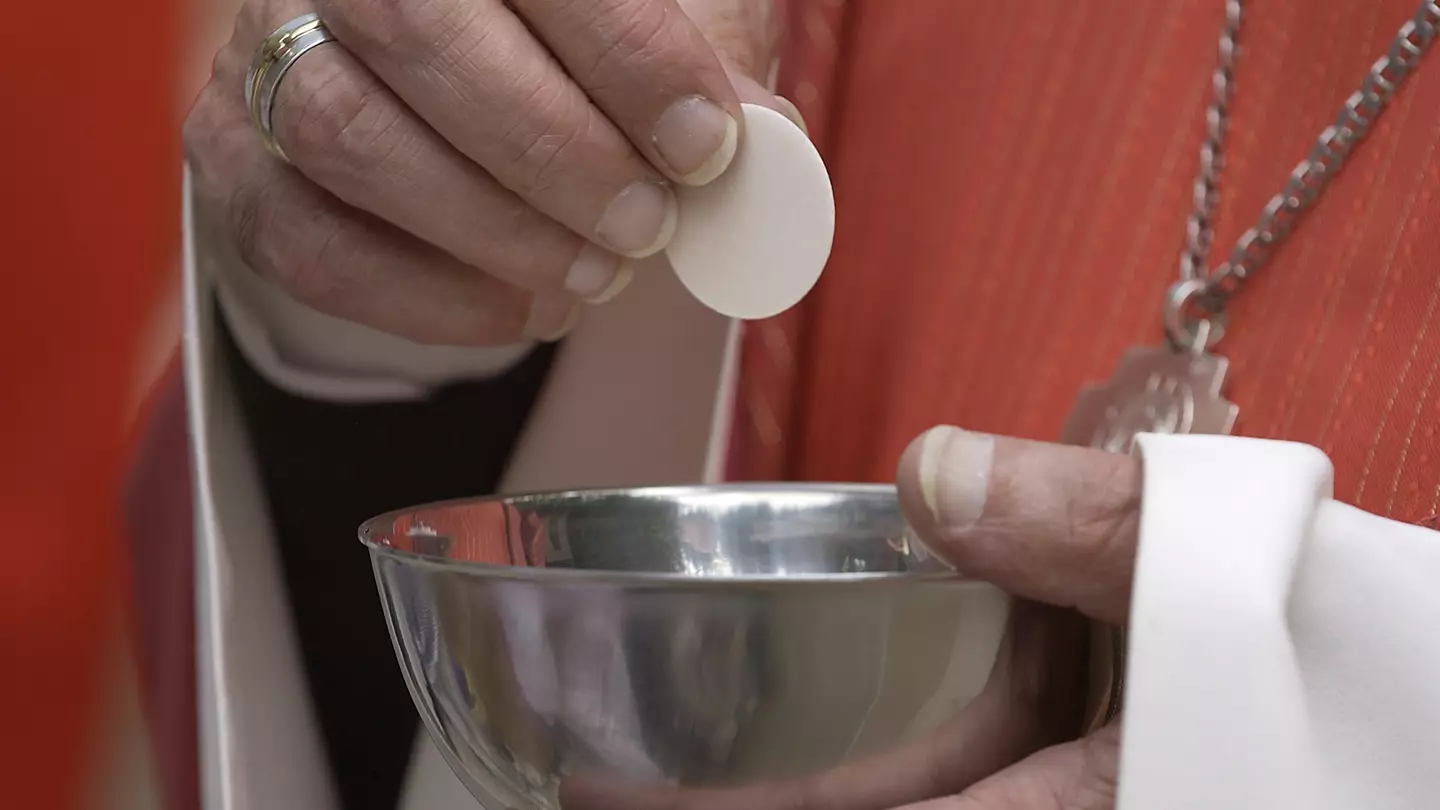

Mysterious red marks that appeared on a communion wafer at a church in Indiana prompted locals to wonder if meant there was ‘something special’ about the establishment – but even if that’s the case, it has nothing to do with the wafer.
Earlier this month, church member Shari Strassell spoke to WKRC-TV about what had occurred in her ‘little town’ after photos emerged online which appeared to show the communion wafers at the St. Anthony of Padua Catholic Church in Morris, Indiana, covered in a red substance.
The wafers are supposed to be representative of the body of Christ and are usually given at communion alongside a sip of wine, which is representative of the blood of Christ.
However, Father Jacob DuMont suggested to WKRC-TV that the red substance on wafer the could be an example of a ‘eucharistic miracle’.
He said: saying: “When a eucharistic miracle happens, you will actually see that miracle in the sense of that change that defies nature, so that this piece of bread or this wine actually turns into flesh or blood.”
Sharing her excitement, Strassell added: “It means the world, it does, and I think there is something special about our church up here.”
Father DuMont acknowledged at the time that an investigation would be taking place to shed more light on why the wafer was red, saying: “We don’t know for sure yet but if eventually that does come to be, that’s something very special, a great sign that Christ’s living presence is here among us. When we have things like miracles they give evidence to this belief.”
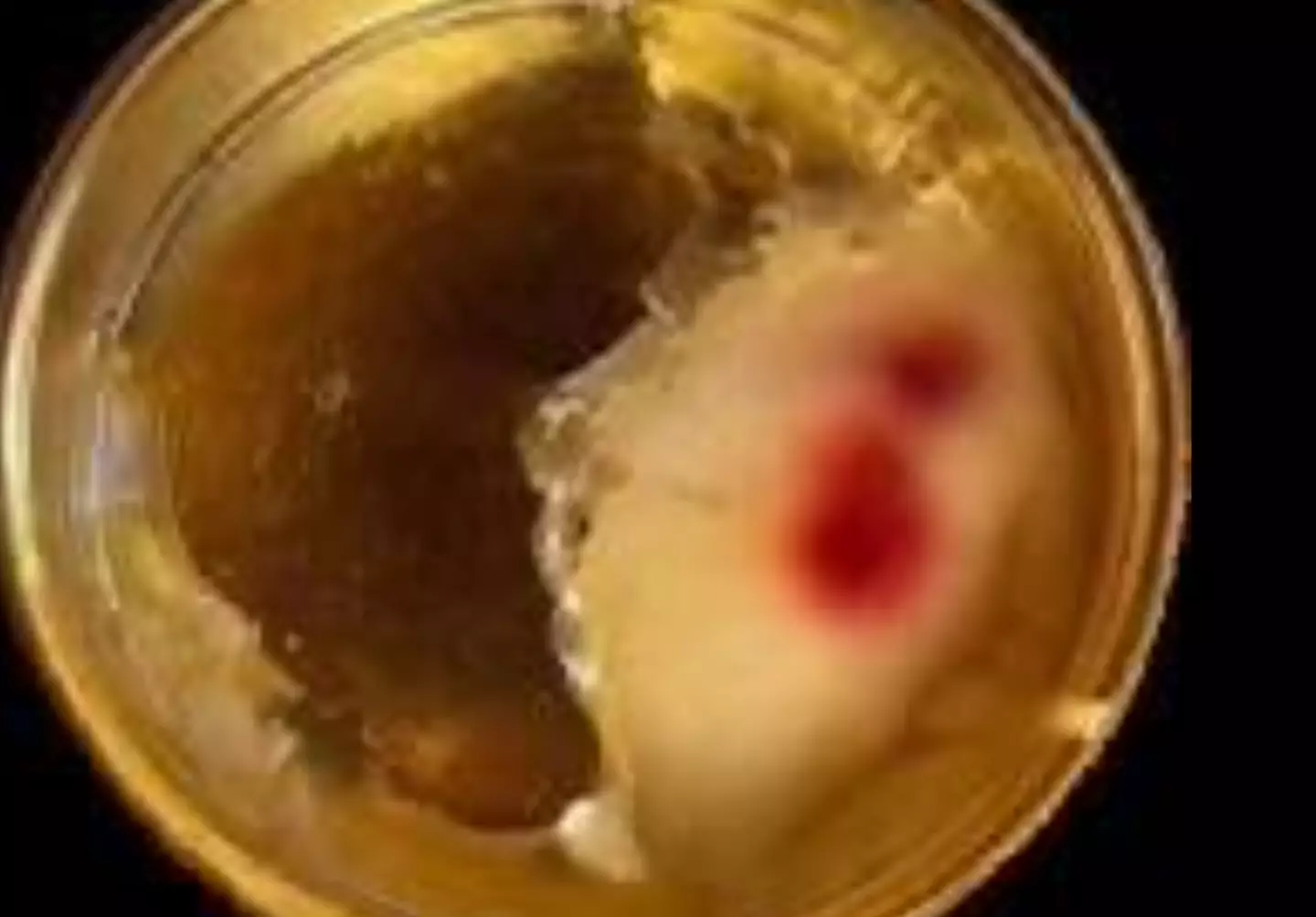

The wafer was covered in a red substance (Facebook/Corpus Christi for Unity and Peace)
The bread was sent to a professional lab, and now the results are in.
Unfortunately, there’s no miracle here – but there is bacteria.
On Monday (March 24), the Archdiocese of Indianapolis said that a biochemical analysis of the wafer revealed only ‘fungus and three different species of bacteria, all of which are commonly found on human hands’.
There was no blood on the wafer, which is said to have fallen out of a Mass kit at St. Anthony Church.


Wafers from the church were tested after the finding (Local 12)
“Throughout the history of the Catholic Church, there have been well-documented miracles and apparitions, and each has been thoroughly and carefully reviewed,” the archdiocese said.
The findings come after some internet users were skeptical that the wafer could really show ‘blood’, as one person responded to Father DuMont’s interview to say: “I’m into eucharistic miracles. However, as with every claim, have an open mind and be skeptical. I think they should first test it for red mold or bacteria, then test to see if it is blood and tissue.”
Featured Image Credit: Getty Stock
Topics: Catholic Church, Religion, Science, Health

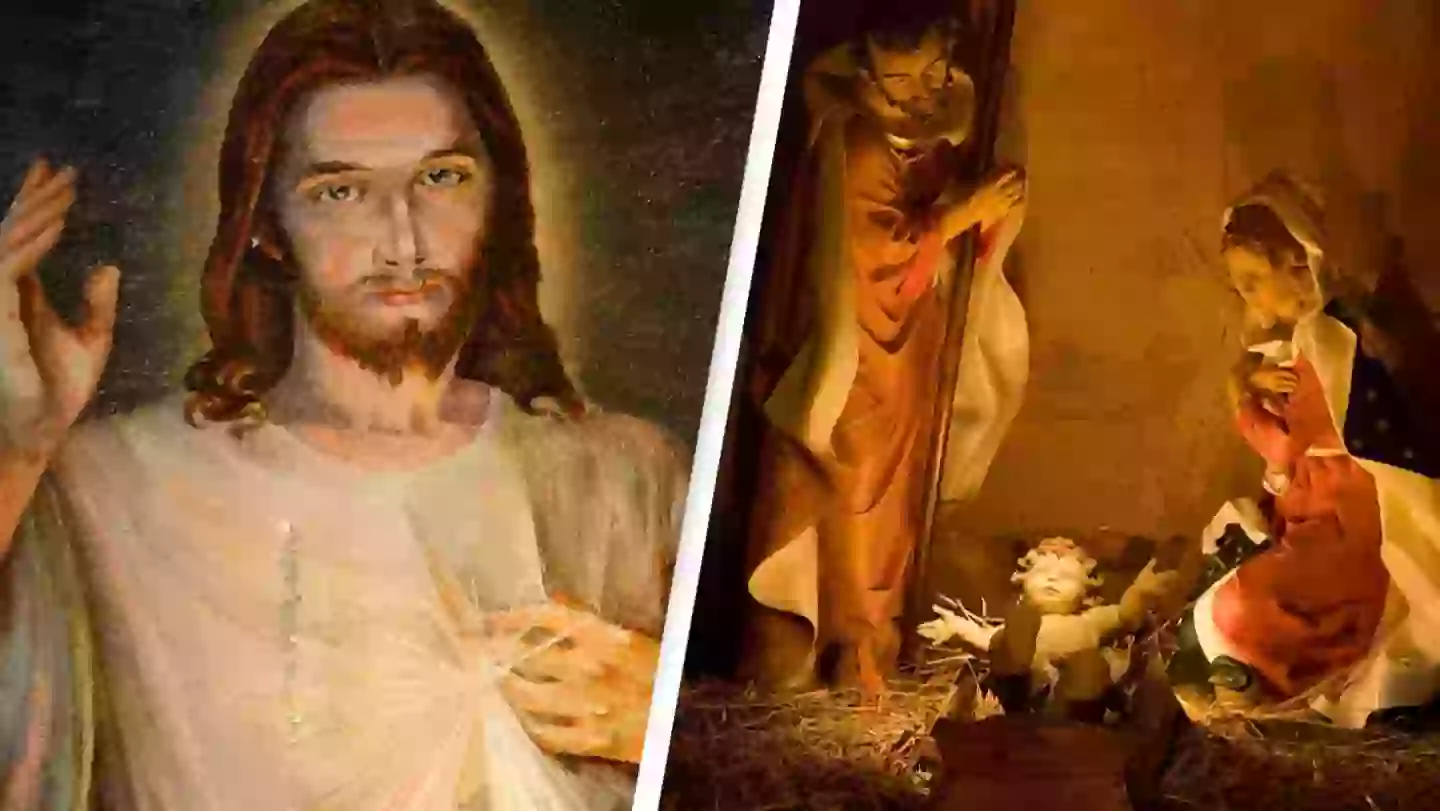
Scientists have revealed when Jesus was really born, and it’s certainly not the date you’d expect.
With Christmas fast approaching and millions getting into the festive spirit with parties, presents and turkey, the big day represents a deeper meaning for many.
For many, December 25 marks the 2,023rd birthday of Jesus Christ – but the reality, according to some experts, is that Jesus wasn’t born on that certain day in December.
While we don’t know for sure, researched detailed in the MailOnline suggest that Jesus may have been born during the spring, throwing curveballs into everything many have believed for so many years.
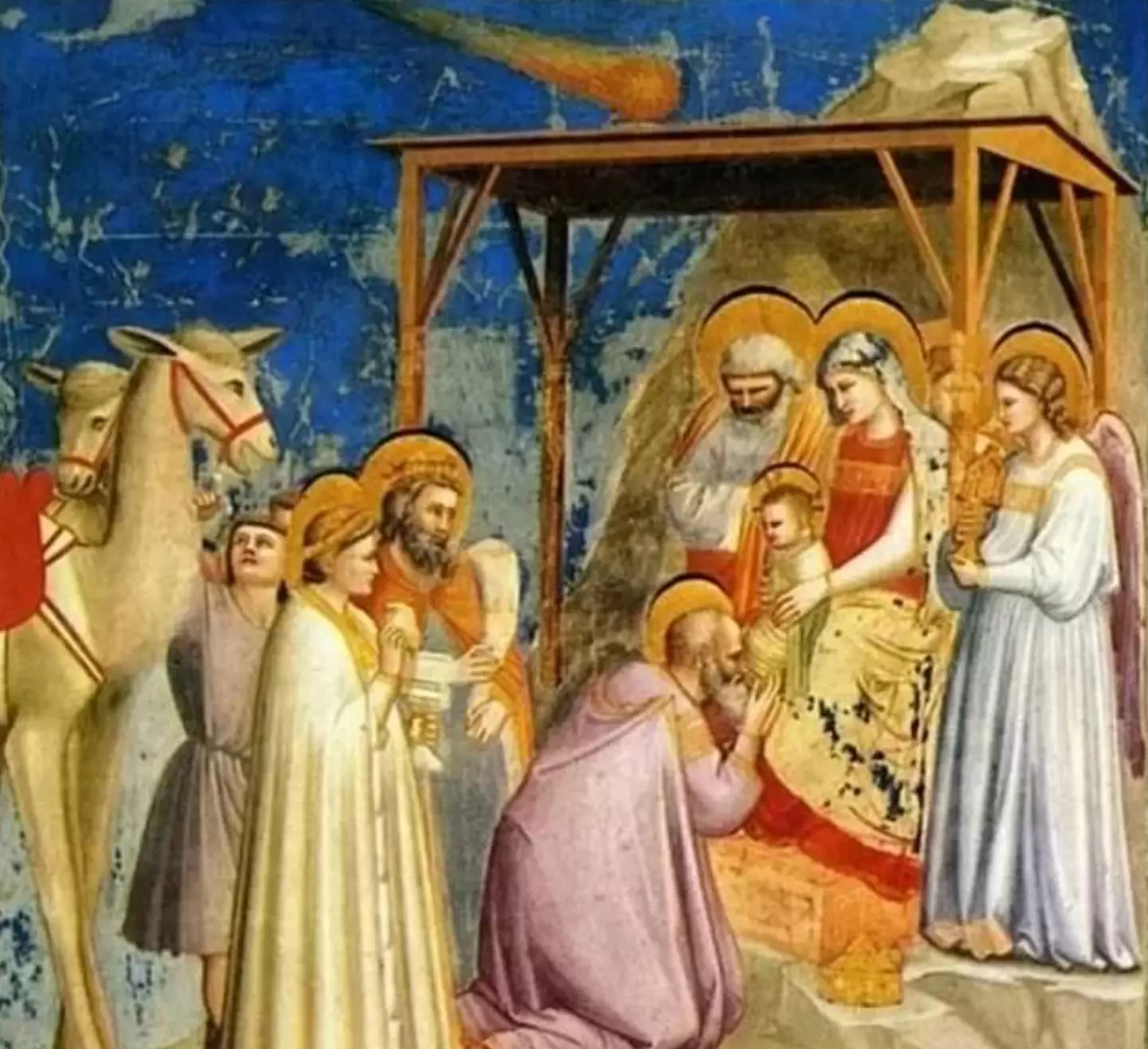

Jesus may not have been born on December 25 after all (Wikipedia Commons)
On top of that, experts are suggesting Jesus may be a lot older than we all think, and the fact there’s no reason to believe Jesus Christ was born on Christmas Day.
Speaking to the MailOnline, Professor Lawrence Mykytiuk of Purdue University in Indiana said: “It remains a humbling fact that despite various claims, no one in modern times is really certain of the exact year of Jesus’ birth.”
Historian Flavius Josephus told the outlet that there was a lunar eclipse shortly before King Herod the Great of Judea died.
How does this look into Jesus?
Well, according to the bible, Herod said that all Jewish boys under the age of two must be killed.
While we can still not confirm this as a definite, it would suggest Jesus was born at least 24 months before King Herod’s death.
As for potential death dates of the king, according to experts these are: December 29, 1 BC, January 10, 1 BC, March 13, 4 BC and September 15, 5 BC.
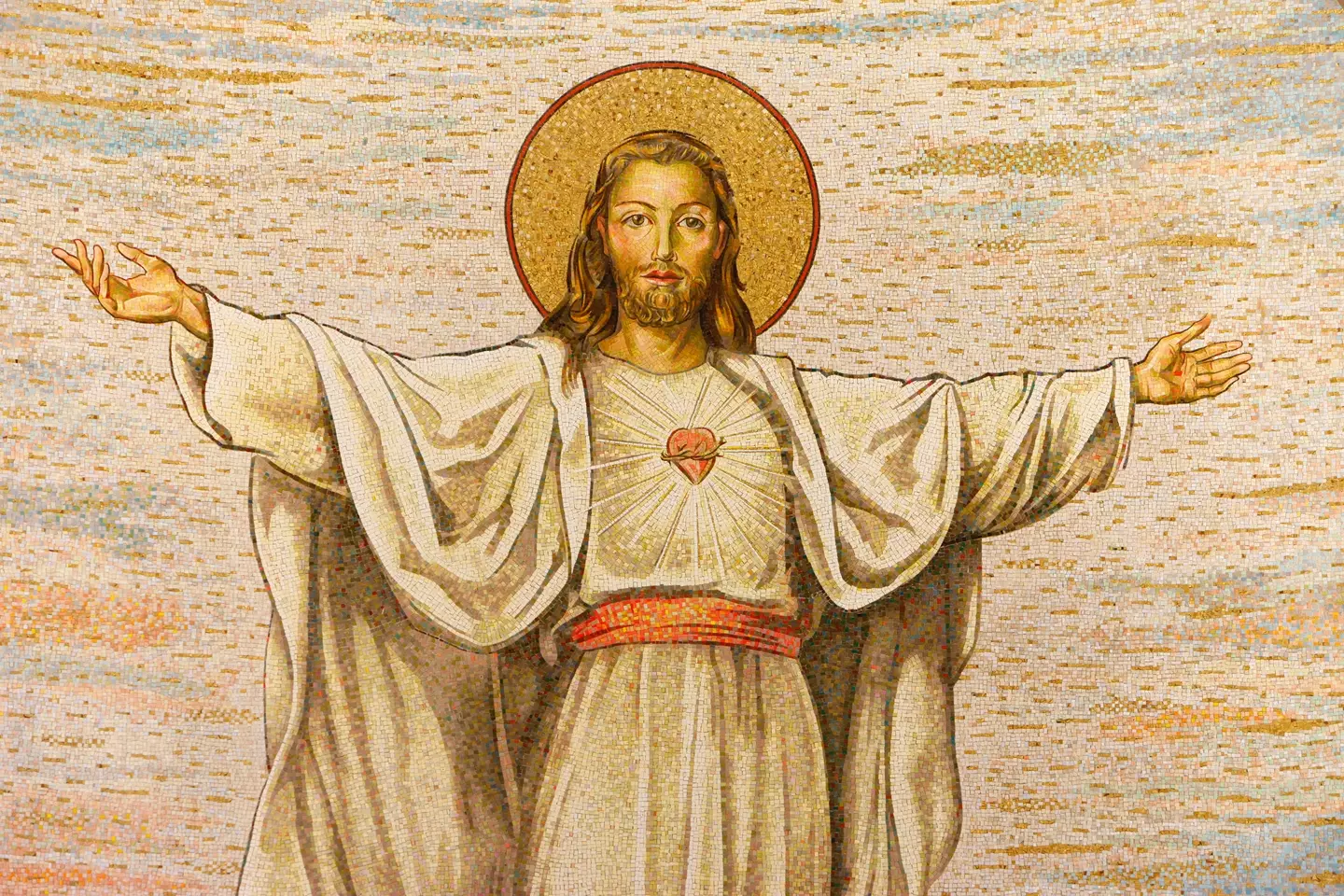

Jesus Christ may have been born in the spring (Getty Stock Photo)
Professor Mykytiuk added: “Josephus also tells us in two places that the Jewish Passover occurred soon after the death of Herod the Great. Because the Passover is observed in the spring; September, January, and December are ruled out.”
The professor continued: “It is most unlikely that Jesus was born on any day in December, let alone on December 25th, because ‘there were shepherds living out in the field, keeping watch over their flocks at night’.
“During winter, shepherds kept sheep in the fold to protect themselves and their sheep from severe weather. This fact of plentiful grass in March fits with the lunar eclipse occurring shortly before the death of Herod the Great.
“The narrowest date one can confidently arrive at for Jesus’s birth seems to be the month of March, during the years 6, 5, or 4 BC.”
Featured Image Credit: Getty Stock Images
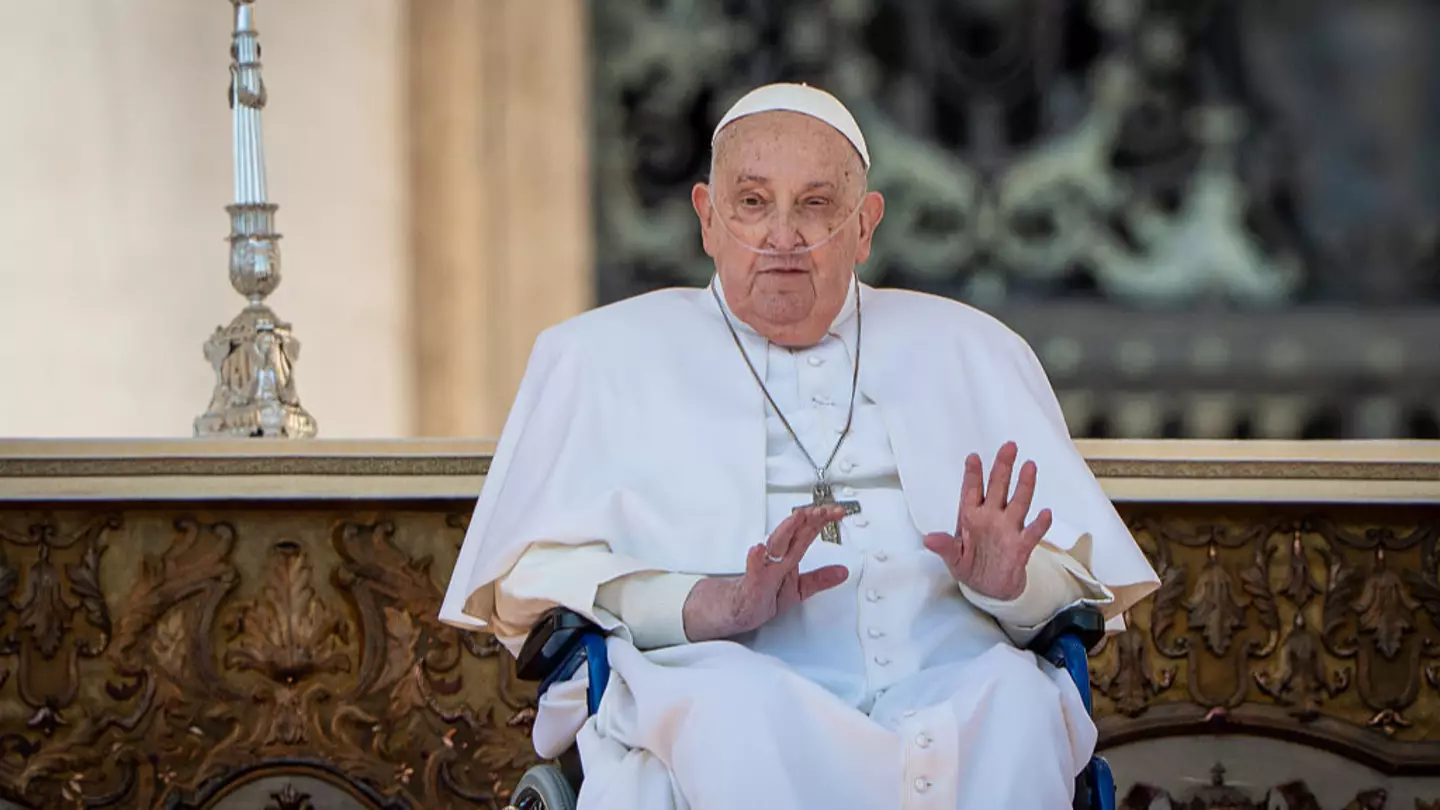

Pope Francis will break tradition and not be buried in Vatican after his death on Monday (April 21) at the age of 88.
The Holy Father at the head of the Roman Catholic Church, whose real name was Jorge Mario Bergoglio, experienced ill health in recent months.
Pope Francis was rushed to Rome’s Gemelli Hospital back in February after suffering a respiratory infection, chronic bronchitis, which developed into pneumonia in both lungs, and a mild kidney failure.
Earlier this month, he had experienced an ‘isolated attack of bronchospasm, which caused an episode of vomiting with inhalation and a sudden worsening of his respiratory condition.’
The Vatican confirmed on Monday (April 21) that Francis had died at 7:35am local time.


Pope Francis has died aged 88 (Stefano Costantino/SOPA Images/LightRocket via Getty Images)
Camerlengo Cardinal Kevin Farrell said: “Dearest brothers and sisters, with deep sorrow I must announce the death of our Holy Father Francis. At 7.35 this morning, the Bishop of Rome, Francis, returned to the home of the Father.
“His entire life was dedicated to the service of the Lord and of his Church.
“He taught us to live the values of the Gospel with faithfulness, courage, and universal love, especially for the poorest and most marginalised.
“With immense gratitude for his example as a true disciple of the Lord Jesus, we commend the soul of Pope Francis to the infinite, merciful love of God, One and Tribune.″
In an interview with Mexican broadcaster N+ in 2023, Pope Francis revealed he would be going against tradition and would be laid to rest in the basilica of Santa Maria Maggiore in Rome.
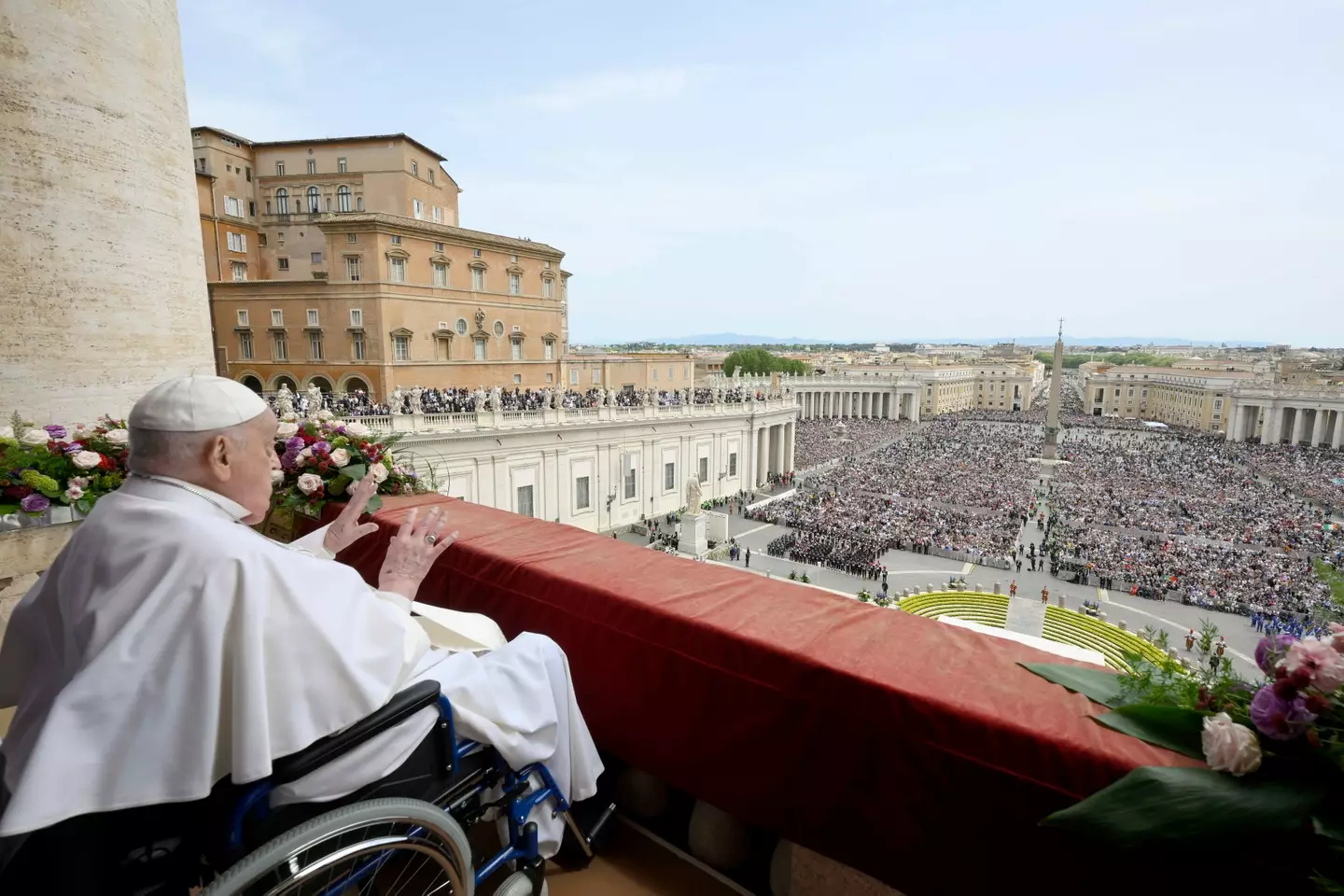

Pope Francis was seen on Easter Sunday (Vatican Media via Vatican Pool/Getty Images)
Traditionally, Popes are buried in the grottoes below St Peter’s Basilica in Vatican City, but Francis instead decided he wanted to be buried in the place he would go to pray before and after trips overseas.
“The place is already prepared. I wish to be buried in St. Mary Major,” Pope Francis said in 2023, adding that he had great devotion to Byzantine Icon of Our Lady, Protectress of the Roman People.
Francis was the first Pope to have been born or raised outside Europe since the Syrian Pope Gregory III, some 1,200 years ago.
Born in Argentina, Francis was praised during his lifetime for his progressive attitude and humility as he was often heard contemplating the war in Ukraine and making comments about the refugee crisis.
Francis also spoke on the ongoing climate emergency, global injustice, and even LGBTQ+ rights during his time as the Pope.
In the UK, King Charles said he and the Queen were ‘most deeply saddened’ to learn of the Pope’s death and ‘were greatly moved to have been able to visit him earlier in the month’.
Charles and Camilla visited the pontiff at the Vatican on 9 April, the day the royal couple celebrated their 20th wedding anniversary.
The King said: “Through his work and care for both people and planet, he profoundly touched the lives of so many. The Queen and I remember with particular affection our meetings with His Holiness over the years and we were greatly moved to have been able to visit him earlier in the month.”
Featured Image Credit: Stefano Costantino/SOPA Images/LightRocket via Getty Images
Topics: Catholic Church, News, Pope Francis, Religion, World News



